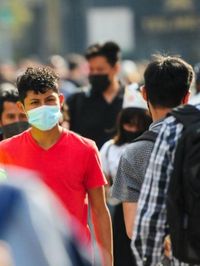The recent detection of a human case of avian influenza A (H5N1) in Mexico has raised alarm among health authorities and the public alike. On April 1, 2025, the Institute of Diagnostic and Epidemiological Reference (InDRE) confirmed that a three-year-old girl from Gómez Palacio, Durango, tested positive for the virus. This marks the first confirmed case of H5N1 in humans within the country, leading to immediate health response measures.
The young patient was initially admitted to a medical facility with suspected whooping cough. However, following laboratory tests conducted in a certified laboratory in Mexico City, the diagnosis was updated to avian influenza. She is currently receiving treatment with oseltamivir, an antiviral medication recommended for severe influenza cases, and remains hospitalized in serious condition at the High Specialty Medical Unit (UMAE) No. 71 in Torreón, Coahuila.
In response to the situation, the Mexican Health Secretariat activated a sanitary cordon of 15 kilometers around the girl's residence to contain any potential spread of the virus. José Antonio Adame De León, head of the Health Jurisdiction Number 2, indicated that all close contacts of the minor, including family members, are being monitored for symptoms. Fortunately, none have shown signs of illness so far.
The Health Secretariat also notified the World Health Organization (WHO) immediately after the case was confirmed, adhering to international health regulations regarding zoonotic infections with pandemic potential. In addition, the Secretariat emphasized that the risk of sustained human-to-human transmission of this strain remains low, and the public should not panic.
As a precautionary measure, health authorities are conducting targeted searches for other potential cases of respiratory viral illness in the vicinity of the confirmed case. This includes training medical personnel on the national guidelines for responding to zoonotic influenza outbreaks.
Additionally, the Secretariat of Environment and Natural Resources (SEMARNAT) is conducting biological sampling of wild and domestic birds in the region to monitor for further outbreaks. Meanwhile, the Secretariat of Agriculture has reported no cases of H5N1 detected in commercial poultry farms across the country, although they are increasing surveillance in rural areas.
The Health Secretariat has assured that it possesses a strategic reserve of 40,000 oseltamivir treatments available for use in the event of new infections. Health officials have urged the public to remain vigilant and adhere to preventive measures, which include frequent hand washing, proper cooking of poultry and eggs, and avoiding contact with wild birds or sick animals.
Experts warn that avian influenza can be transmitted from infected birds to humans primarily through direct contact or contaminated environments, particularly in poultry farms or markets. Symptoms in humans can range from mild respiratory issues to severe complications, including pneumonia and multi-organ failure.
In light of this recent case, health authorities have reiterated the importance of public awareness regarding avian influenza. They recommend that individuals who have been in contact with infected birds or exhibit respiratory symptoms seek medical attention promptly. The symptoms to watch for include high fever, cough, difficulty breathing, and general malaise.
The WHO currently assesses the public health risk posed by this virus to the general population as low, provided that basic preventive measures are observed. They emphasize that cooking poultry and eggs thoroughly eliminates any potential risk of infection.
As the situation develops, health officials continue to monitor for any signs of further infections, both in humans and birds. The public is encouraged to stay informed through official channels and to report any unusual symptoms or sick animals to local health authorities.
In summary, while the detection of H5N1 in a human case is concerning, the measures taken by Mexican health authorities reflect a proactive approach to managing the situation. The focus remains on containment, monitoring, and public education to prevent further spread of the virus.









